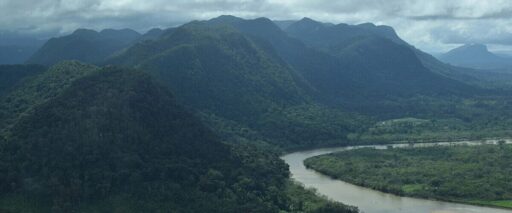Honduras will hold elections Nov. 30 for president and all 128 seats in Congress. The winners will hold office for the next four years, shaping the country’s environmental policies at a time when its many forests and ocean ecosystems are rapidly disappearing. More than half of Honduran territory is covered in rainforest, with another 10% covered by coastal wetlands. La Mosquitia, one of the most important forests in Central America, connects protected areas in Nicaragua and acts a biological corridor for wildlife throughout the region. But the country also loses about 23,000 hectares (56,800 acres) of forest every year to fires, agribusiness and infrastructure development, as well as logging and illegal activities by criminal groups operating in remote border areas. A Miskito home in La Mosquitia. Image by Edgard Herrera/WCS. Despite having relatively low carbon emission rates, the government says these factors could eventually lead to a rise in emissions, complicating its long-term climate goal to cut them by 16% by 2030. It’s also committed to restoring approximately 1.3 million hectares (3.2 million acres) of forest by the same year. The candidates who win this election will leave office in 2029, giving the country just one year to meet these climate targets, making this a crucial moment to elect candidates with clear plans for the environment. Nevertheless, voters are more concerned about high crime rates and government corruption, including whether the outcomes of this election will be fair and honest. And while the Honduran economy has grown at a steady…This article was originally published on Mongabay
From Conservation news via this RSS feed


